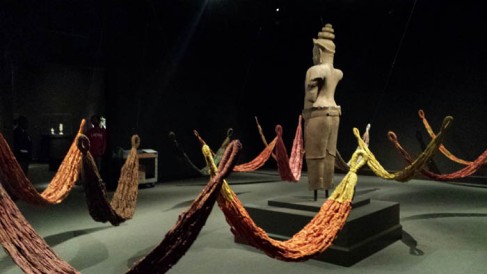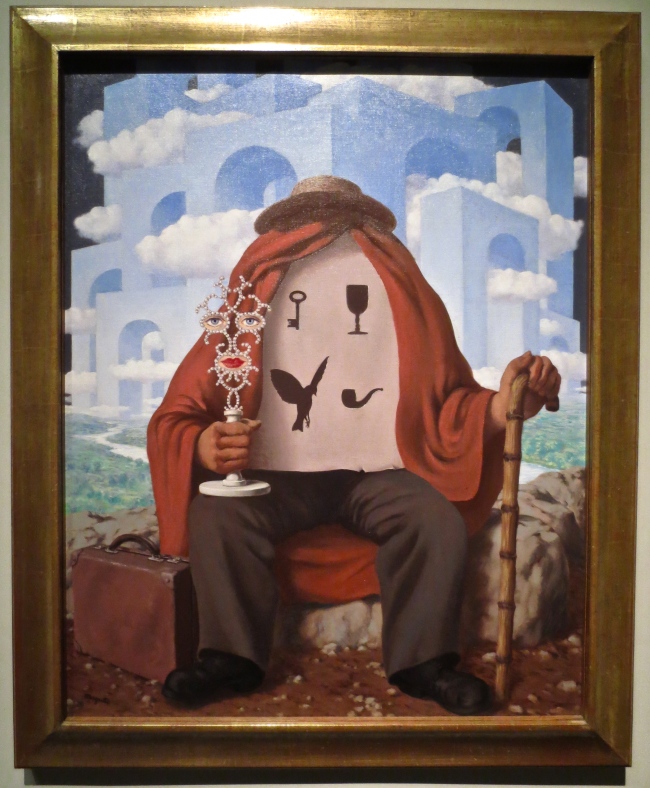Richard Newton was the featured artist at one of Chinatown’s art galleries, Jancar Gallery. A total of 9 pieces were showcased, with Newton’s “La Gruta Azul” installation as the centerpiece of it all. When I first entered the gallery, I thought I had stepped into the wrong building. My face was greeted by floor to ceiling strings of empty aluminum cans and plastic water bottles in every direction. Newton creates a maze of cans on strings through which you can walk through and enter a cave-like center area completely made of bright blue Pepsi and beer cans. In the center of this space is an open keg of “holy water” glowing neon blue with more glass bottles floating at the top. The floor is also covered with crushed blue cans and visitors are encouraged to kick the cans around because according to Newton, the noise is part of the experience of the installation. I loved this installation; there were so many different elements and small details to discover that one could spend hours walking through the walls of cans. The light shining through the front window also created a dramatic effect when reflected off the shiny cans, however I’m not sure if that was the intended idea.
Walking into this installation made me feel like I was in a vibrant yet calm and soothing, man-made world. The blue lights plus the rush of water provided the peaceful backdrop for exploring this new “world.” To me, it was a peek into the future, where eventually everything created be made from previously recycled products. On the walls of the installation were several molds of Jesus surrounded by broken glass shards. It might have been an analogy to how much society worships products and the convenience of them.
Newton incorporates cans into his two-dimensional work as well. “Lost and Found in the Ozone” is a photograph of flattened tin cans with various aerosol cans attached to the aluminum canvas. Through this piece, it seems the viewer actually realizes the reality of harming the ozone through the overuse of these products. It depicts the overuse and prevalence of cans. It also shows that very old metal does not simply disintegrate; it remains intact for decades.
“Ricardo’s Original CANTINA” was another photograph printed on aluminum with additional crushed beer cans attached to the surface. The photograph was of young groups of people interacting with one of his previous installations, “CANTINA.” When placed in a setting with only recyclable trash as the focus, people surprisingly become very entertained. I think Newton is trying to gather a higher human emotion or response from something that is so ordinary that it is usually considered trash. The people in this photo look like they are enjoying themselves while they kick around the empty cans. By using cans as his only material, it seems that he wanted his viewers to get back to basics in life by forcing them to focus on just one simple ordinary object. Yet, in all of his works he seemed successful in turning trash into an intriguing material.


















